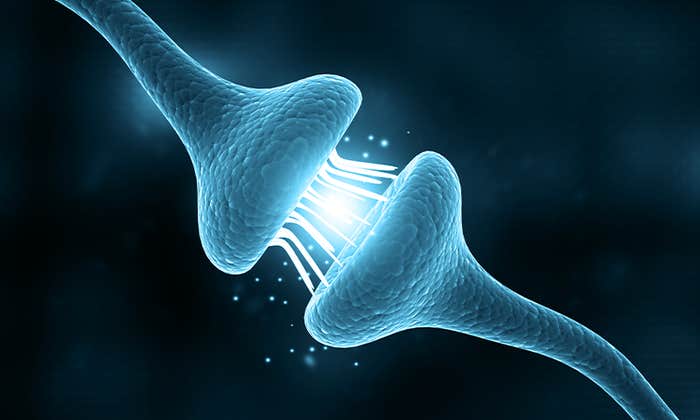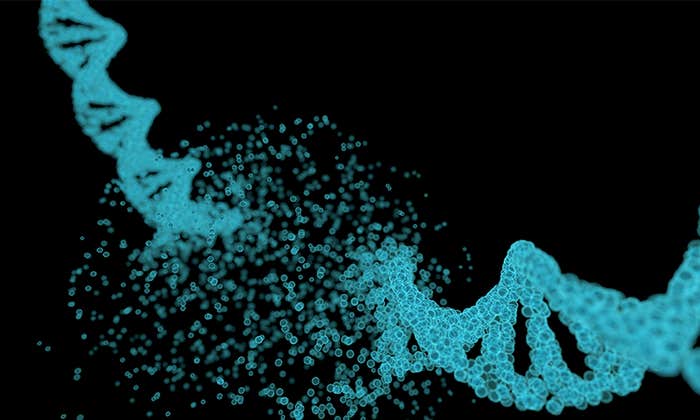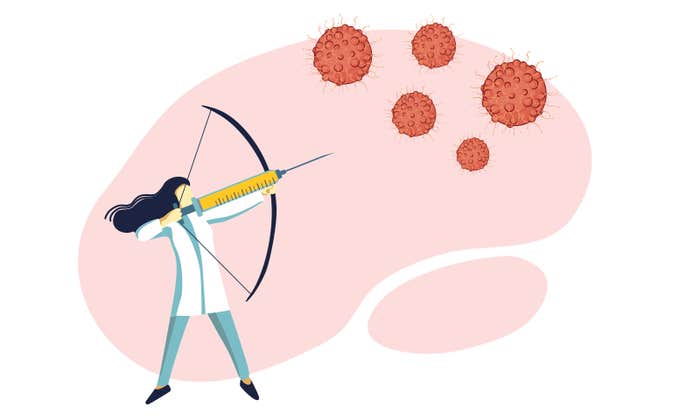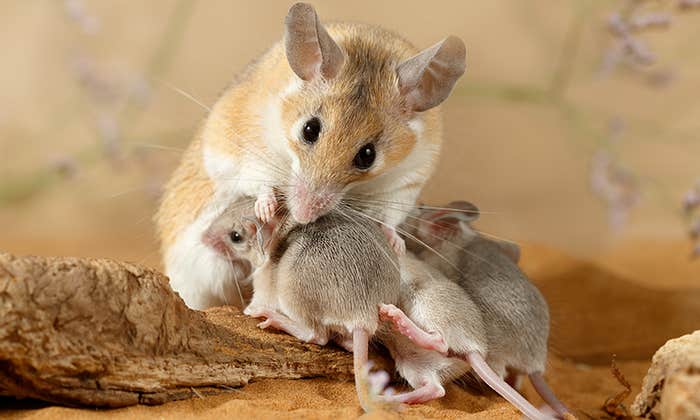Michael Wigler, a professor at Cold Spring Harbor Laboratory was surprised. A molecular biologist and geneticist, with a background in mathematics and medicine, he devoted two decades of his research career to studying the causes of autism. In the early 2000s, Wigler and his team revealed that a certain portion of autism cases have genetic underpinnings. One of the team’s goals was to elucidate the full extent of autism’s genetic causes in order to find clues to its treatment and prevention. The team thought they had a good theory, which they dubbed the “unified hypothesis,” but in 2017 that theory began to develop cracks. Now, the most recent findings produced by Wigler and his colleagues are not at all what they expected.
Based on theory, the team projected that affected siblings would share more genetic determinants inherited from their mothers than the fathers. But the findings showed the opposite. “In fact, we see a greater signal of sharing from the father than from the mother,” Wigler says. That parental gender surprise is a head-scratcher that the team has only recently been able to explain. “It’s a puzzle. And we do not like our solutions.”

A complex condition, autism afflicts 1 in 44 children in the United States, according to the Centers for Disease Control. It manifests itself in a multitude of symptoms, from social awkwardness to anxiety, repetitive behaviors to resisting change. That variability is the reason why it’s called an autism spectrum disorder or ASD. Where on the spectrum an individual fits matters greatly. Those who fall into the high end of the spectrum have better prospects—they are the high-functioning individuals who often have special abilities such as superior math skills or photographic memory, which help them cope with life challenges, such as social anxieties. At the low end of the spectrum are those with intellectual disabilities and those who don’t talk at all. It’s estimated that 31 percent of children with ASD have an intellectual disability, and an even greater number have problems with motor skills.1
Gender has always been a big part of the conundrum. Boys are about four times more likely to be diagnosed with autism than girls. According to the statistics published by the John Hopkins School of Public Health, 1 in 34 boys has autism (2.97 percent) compared to only 1 in 145 girls (0.69 percent). Girls often have different symptoms than boys. For example, they tend to suffer more from anxieties rather than display repetitive behaviors, and because anxieties can be masked or overlooked by clinicians, a certain percentage of girls may end up being misdiagnosed. Instead of being placed on the spectrum, some may be diagnosed with psychiatric disorders, such as depression or anxiety, says Catherine Lord, a practicing clinician who focuses on autism and is a professor of human development and psychology at the University of California, Los Angeles.
Some women self-diagnose later in life, having grown up without a clue that they might be autistic. Despite the increased focus on autism in the past two decades, which has lifted some of the social stigma from the condition, that trend is rising, Lord says. “The number of self-diagnosed people who are female is increasing every day,” she says. “And it’s not so much true for males.” Brandy Schillace, editor in chief of BMJ Medical Humanities, author, and host of Peculiar Book Club podcast self-diagnosed when she was an adult, after being told to “not be weird in public” for most of her childhood. “What makes autism a disability is not that you are broken, but that society disables you because it’s not built around your needs,” Schillace says.
Gender is a big part of the conundrum. Boys are about four times more likely to be diagnosed with autism than girls.
It’s hardly surprising that society doesn’t cater well to the people on the spectrum. After all, the exact definition of autism is still evolving. It took decades for society to even recognize autism properly as a condition. For a good chunk of the 20th century, autism was viewed as childhood schizophrenia. People with autism had been classified as psychopaths rather than neurodiverse individuals. Even the modern-day definition of autism as a spectrum disorder is still developing. The current, fifth edition of the Diagnostic and Statistical Manual of Mental Disorders, or DSM-5, described certain autistic features differently from its predecessor, DSM-4, a testament to the fact that scientists are still working to identify its full nuances.
The underlying causes of the disorder had been equally puzzling, sometimes leading scholars in the wrong directions, such as pinning the blame on the children’s mothers for their “cold and unemotional parenting.” And without knowing what causes autism, physicians had—and still have—no means of preventing it or reducing its severity, or risk of occurring. Just like with any other affliction, the path to mitigating autism lies in understanding where it comes from. If medics understand autism causes better, they would be able to design better therapies and potentially even better prevention.
That’s exactly what Wigler has been doing for the past 20 years. As the genomic methods matured on the brink of the millennium, he hoped to find the answers in the genes of people on the spectrum. But piecing these answers together proved just as complicated and nonlinear as the history of this puzzling condition.
A Complex History of a Complex Disorder
The two people typically credited with the definition of autism are Hans Asperger, an Austrian physician who practiced in Vienna before and during World War II and Leo Kanner, a Jewish psychiatrist born in 1894 in Klekotiv, then in Poland and now in Ukraine, who later left Europe for the United States. Both began using the term “autism” in the 1940s. Asperger, for whom the Asperger syndrome is named, described the children he studied as “autistic psychopaths,” and as recent findings revealed, went on to collaborate with the Nazis on euthanizing patients that were deemed mentally unfit to exist in society.2 Kanner’s paper described his patients as not relating “in the ordinary way” to people or situations, and said their “behavior is governed by an anxiously obsessive desire for the maintenance of sameness.” He was the one who, at first, explained the disorder by unemotional parenting, coining the term “refrigerator mother”—a view he denounced later.
It took decades for the autism research community to find out that neither man was the first to define and describe autism. A Ukrainian-born Jewish female psychologist named Grunya Sukhareva beat them by about 20 years. She was just well hidden behind the Iron Curtain.
Sukhareva graduated from medical school in Kyiv in 1915 and worked at the city’s psychiatric hospital. A few years later, she moved to Moscow, where she worked at the Pedagogical Sanatorium School for children with special needs. Some of them were traumatized by the dramatic events of the time—World War I, the Russian Revolution and civil war. Others were noticeably different from their peers: They had social deficits, motor-skills issues, preferred to play alone or interact with adults rather than kids their age. Sukhareva described one of the boys, a 12-year-old who read everything he could find and never played with toys, as an introvert “with an autistic inclination into himself.”
The simple hypothesis that the mothers passed a strong autism-causing variant didn’t stand the test.
Children with severe challenges sometimes lived in the sanatorium for two to three years, taking school classes and physical education, and receiving social- and motor-skills training. In a 1925 paper, Sukhareva described six boys with “autistic tendencies,” chronicling their behaviors in finest details, including the fact that some were gifted—one excelled at playing violin and another had an incredible memory for numbers. Her findings, along with other records of the clinical work, were published in Russian and a year later in a German journal, where her name was misspelled as Ssucharewa.3 The paper was not translated into English, so neither her term autistic nor her detailed observations reached the English-speaking psychiatrists. The German-speaking Asperger and Kanner might have read it, although it’s hard to tell because neither one mentioned her name or referenced her in their own papers. The fact that the German version of her name had several typos likely didn’t help either.
Nearly 100 years later, another Russian-speaking psychologist, Irina Manouilenko, found the original 1925 volume while working on her dissertation at the Karolinska Institute in Sweden. She decided to compare Sukhareva’s descriptions with the modern-day standard definitions of the DSM-5, published by the American Psychiatric Association. She was surprised to see how spot-on Sukhareva’s descriptions were. Manouilenko published these comparisons in a 2015 paper, “Sukhareva—Prior to Asperger and Kanner.”4 What the DSM-5 depicts as deficits in “social interactions” and understanding relationships, Sukhareva described as “flattened affective life,” “lack of facial expressiveness and expressive movements,” “tendency toward abstraction and schematization,” and “keeping apart from their peers, avoiding communal games.” And where the DSM-5 lists “stereotyped or repetitive motor movements,” “insistence on sameness,” “fixated interests,” and “sensitivity to sensory input,” Sukhareva’s notes speak of “talking in stereotypic ways,” being “pedantic,” with “strong interests pursued exclusively,” and sensitivity to noise or smell. Moreover, they were worded so simply that any parent or grandparent could understand them.
With the only diagnostic tools available to her being the keen power of observation, Sukhareva couldn’t pin down the causes of this strange disorder. Instead, she focused on helping these children improve their social and motor skills by interacting with others and taking classes in painting, woodwork, and gymnastics—until they were ready to transfer to regular schools. Remarkably, the basic foundations of the interventions she set up haven’t changed much over a century. Even some modern schools like Meristem, which prepare autistic young adults for an independent life and employment, in essence follow similar principles. Nonetheless, it took more than a few decades for diagnostic and analytical tools to mature enough for scientists to start chipping away at the puzzle.
Combing Through the Genes
Wigler’s interest in autism stemmed from his early life experiences. His girlfriend’s brother was different from every other kid he knew. “He never looked you in the eye, but he knew every baseball player and all the statistics of the baseball players, and that’s all he would talk about,” Wigler says. “He made a profound impression on me.”
Wigler didn’t know the boy had autism. Later, in medical school, Wigler learned about the condition and became curious about its causes. At first, he doubted it was merely hereditary, attributing it to so-called de novo mutations—not present in parents but arising in their child. “What struck me about this kid was that he was so different from anybody else in the family so I thought from the beginning that autism was the result of a new mutation.”
In the 1980s, he became interested in the so-called genome difference analysis. The method had proved useful in studying cancer causes so he decided to look for new mutations in the genomes of people with autism. At the time, such methods didn’t yet exist, so his team published a paper describing the theory behind building such technology. Shortly after, at the end of the 1980s, Russian scientist Nikolai Lisitsyn, who had been working on a similar problem, contacted Wigler’s lab. Lisitsyn had managed to solve a particular technical problem, and, detecting his interest in fleeing a collapsing Soviet state, Wigler invited him over to work at CSHL. This collaboration laid the foundation for the future methods of genomic analysis Wigler’s lab would follow for years to come.
Healthy pregnancies are a good start to reducing autism severity and risk.
In the early 2000s, Wigler’s team got a chance to put their genome mining tools to the test. Child psychiatrist Susan Folstein, at the time at Tufts New England Medical Center, had put together the first small simplex collection of about 200 families with instances of autism. She passed her collection to James S. Sutcliffe, an associate professor of psychiatry at Vanderbilt University who studies the genetic underpinnings of autism spectrum disorders. Wigler, who was looking for such collections, got in touch. After applying their genomic analysis methods to the samples, Wigler and his colleagues Lakshmi Muthuswamy and Jonathan Sebat showed that de novo mutations most certainly play a role.
The particular culprits were the so-called “copy number variations”—genetic glitches in which large chunks of the genome get deleted or duplicated. They looked as if someone tore a piece of the DNA string. “Your genome is a long string. It’s a ribbon. And if you were to cut out a piece of the ribbon and then tie it together, you’d be missing a large piece of your ribbon,” Wigler explains. “Some of them are really large, hard to miss with our new techniques, as easy as seeing a crater on the moon with a low power telescope.”
Notably, not all de novo mutations cause trouble. There are about 100 to 200 de novo mutations in the genome for every birth, Wigler explains, and most of them don’t affect anything. For example, genes involved in the sense of smell, or the immune system function vary greatly between people and some variants may even be advantageous. “There’s great tolerance, and probably even positive selection for variation in these genes,” he explains. But other genes’ functions are so essential and specific that any changes would render the organism inviable or severely disadvantaged. The large copy number mutations are of that type, just too massive to leave no mark. And they were clearly more abundant in children that had autism than in their neurotypical peers. The team showed that the copy number variations were responsible for a substantial number of autism cases. That finding opened new horizons, sparking hope that by sequencing the DNA of people with autism, and looking for smaller sequence variants that alter gene function, researchers would be able to pin down the causative genes.
Previously, and still today, some scientists used more standard approaches, combing through collections for variants that might be common to people with similar disorders, a technique called Genome Wide Association Studies. One such collection was called AGRE for Autism Genetic Resource Exchange, an effort aimed to shed more light on familial autism, studying the multiplex families—those that had multiple siblings and multiple members affected. Another collection named the Autism Genome Project was composed of different groups across the U.S. and Europe and gathered information about affected siblings. “The idea was to see what regions of the genome are shared between affected individuals across large collections,” says Sutcliff. “And that effort failed to find loci strongly influencing autism incidence,” Wigler notes. “A very important failure, since it pointed to other causes, including new mutations.”
Consequently, the Simons Foundation followed the lead of Folstein, and created the Simons Simplex Collection, or SSC. The effort was led by Lord, an expert in diagnostic criteria. They amassed genetic samples from 2,600 families, where only one child affected was on the spectrum while no siblings or parents were. “With SSC there was hope to find the ‘core autism’—the mutation or set of genes specific to autism,” says Sutcliffe. By comparing the autistic child’s genome to the genomes of other family members, scientists aimed to pinpoint the genes that made this child different. Wigler worked closely with Lord to mine the SSC collection for answers and identify the genetic mishaps in children from families that did not have any other members affected. More recently, embracing the ideology of “strength in numbers,” the Simons Foundation launched SPARK, an ambitious ongoing effort to collect data from 50,000 families of any kind and, so far, has collected about 30,000.
Notably and somewhat strikingly, de novo mutations played out differently in boys versus girls. While boys with “comparable-size craters” succumbed to autism, the girls did not. “It took a larger hit to make a girl autistic than it took to make a boy autistic,” Wigler says. “That was one of the first indications that girls were resistant.” In their 2011 study, Wigler and his team explained that women have greater resistance to autism from genetic causes.5 The phenomenon became known as a female protective effect. “Female protective effect means that you need a higher load of mutations to rise to a phenotypically recognized Autism Spectrum Disorder that can be clinically determined,” Sutcliff says.
Yet, as seminal as the findings were, overall they explained only about 30 percent of autism cases. Neither was it possible to identify that definitive “core autism” set of genes. “We had hoped that there was one, but the answer is ‘no, not really’,” Sutcliff says. “Today’s data doesn’t allow us to do that.”
Aiming to solve the rest of the puzzle, Wigler’s team proposed the so-called unified hypothesis of autism. They postulated that there must be other kinds of mutations that weren’t possible to see so easily. For example, these mutations may not be occurring together in the genome but are instead spread out across multiple genes in different places. They also hypothesized that these mutations would be transmitted largely from the mother because—while mothers were better protected as females—they still could carry the autism-causing variants and then pass them onto their children. “We made a unified hypothesis, stating that autism results from de novo mutations and is transmitted by the survivors of the de novo, namely the girls,” Wigler says.
When there were eventually enough large sample collections, with enough genome data, Wigler, in collaboration with Matt Wroten and Ivan Iossifov, also of Cold Spring Harbor Laboratory, and Kenny Ye from Albert Einstein College of Medicine, developed a method to put their hypothesis to test. Specifically, the team wanted to measure the genomic differences between siblings that were discordant for autism (meaning one has it and the other doesn’t) and concordant for autism (meaning both siblings have it). Overall, they applied the method to about 1,300 pairs of concordant siblings and 4,500 pairs of discordant siblings from the SSC, AGRE, and SPARK collections.
But the simple hypothesis that the mothers passed a strong autism-causing variant didn’t stand the test. “Surprisingly, we observed that the concordant siblings shared more of the fathers’ genomes.” Wigler says. “The more extensive sharing of paternal than maternal genomes contradicted our expectations that mothers will be the primary source of damaging variants in the high-risk multiplex families.” And that meant that there was more work to do: more hypotheses to formulate and prove.
Some hypotheses invoke complex genetics, and these might be correct, but Wigler and colleagues doubt it will be the full story. “The data is very hard to fit with standard genetic models,” he says. They already have some other ideas that might help explain the mystery. He and another Cold Spring Harbor Laboratory researcher, Tobias Janowitz, considered theories that the mother’s immune system plays a role, potentially impairing fetal development. Recent research supports such a theory. A 2017 study by John Hopkins Bloomberg School of Public Health team concluded that when pregnant mothers have fevers, their children’s risk of autism increases.6 A 2018 study by Columbia University researchers found that if a pregnant woman suffers a high fever in her second trimester, her child’s chances of developing autism increase by 40 percent.7
The immune system can play an even greater role in the mother-father conundrum, Wigler thinks. For example, the father may be carrying an antigen—meaning a protein—that the mother’s body doesn’t like so it attacks it in the fetus. “The father may not be carrying an autism risk gene—just an antigen that the mother doesn’t like,” Wigler explains. “The kids who have autism, may be kids who’ve suffered from an immunological attack on them while they were in utero. Some portion of autism might not be caused by conventional genetics, but by the maternal fetal conflict.”
While some genetic causes of autism, like the copy number variations, have become proven culprits, others will take longer to identify. A full list of autism’s genetic underpinnings might take years, if not decades, to put together, and it still may be incomplete. In the meantime, Wigler says, healthy pregnancies are a good start to reducing autism severity and risk. That involves parents and physicians. Doctors can monitor pregnancies better. They can intervene earlier. They can watch out for certain dangerous conditions that occur in pregnancies, such as preeclampsia—a problem related to the placenta. “There isn’t much we can do about genetic mutations yet, but we can work on the maternal-fetal conflict,” Wigler says. “If we could control that process better, we could have healthier babies and reduce autism risk.” ![]()
Lead image: Magic Pictures / Shutterstock
References
1. Baio, J., et al. Prevalence of autism spectrum disorder among children aged 8 years—autism and developmental disabilities monitoring network, 11 sites, United States, 2014. Surveillance Summaries 67, 1-23 (2018).
2. Czech, H. Hans Asperger, national socialism, and “race hygeine” in Nazi-era Vienna. Molecular Autism 9, 29 (2018).
3. Ssucharewa, G.E. Die schizoiden psychopathien im kindersalter. Monatsschrift für Psychiatrie und Neurologie 60, 235-247 (1926).
4. Manouilenko, I. & Bejerot, S. Sukhareva—prior to Asperger and Kanner. Nordic Journal of Psychiatry 69, 1761-1764 (2015).
5. Levy, D., et al. Rare de novo and transmitted copy-number variation in autistic spectrum disorders. Neuron 70, 886-897 (2011).
6. Brucato, M., et al. Prenatal exposure to fever is associated with autism spectrum disorder in the boston birth cohort. Autism Research 10, 1878-1890 (2017).
7. Hornig, M., et al. Prenatal fever and autism risk. Molecular Psychiatry 23, 759-766 (2018).


























